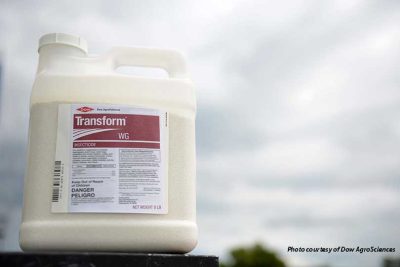Legal Victory: Court Rules EPA’s Registration of Bee-Killing Insecticide Unlawful, Citing Failure to Assess Risks to Endangered Species

All Global Research articles can be read in 51 languages by activating the Translate Website button below the author’s name.
To receive Global Research’s Daily Newsletter (selected articles), click here.
Follow us on Instagram and Twitter and subscribe to our Telegram Channel. Feel free to repost and share widely Global Research articles.
***
In a major win for pollinators and other wildlife, the U.S. Court of Appeals for the 9th Circuit today ordered the Environmental Protection Agency to protect endangered species from the bee-killing insecticide sulfoxaflor. The court held that the agency’s 2019 decision to allow new uses of sulfoxaflor across more than 200 million acres of pollinator-attractive crops violated the Endangered Species Act.
Today’s ruling comes in response to a legal challenge to the expanded use of the insecticide by the Center for Food Safety and the Center for Biological Diversity.
In a strongly worded decision, the court stated,
“When an agency deliberately ignores Congress’s legislative command, it undermines the will of the people and ultimately our constitutional structure of government.”
The court wrote that by routinely registering pesticides without protecting endangered species, which then prompts the public to sue to gain those protections, the EPA is “engaging in a whack-a-mole strategy for complying with the ESA.”
“For far too long, EPA has bent to the pesticide industry’s desire to get their toxic chemicals to market as quickly as possible,” said Sylvia Wu, a senior attorney at Center for Food Safety and counsel in the case. “Today the court told EPA, ‘No more: Congress tasked the agency with protecting endangered species and the environment at-large, not just the interests of the pesticide companies.’”
In today’s ruling the court gave the agency a 180-day deadline to provide the public with an opportunity to comment on the expanded use of the insecticide.
The EPA originally approved sulfoxaflor in 2013, but the 9th Circuit vacated the approval for failing to comply with the Federal Insecticide, Fungicide, and Rodenticide Act. FIFRA requires that all pesticide applications must show that the pesticide will not cause “unreasonable adverse effects on the environment.”
The EPA issued the 2019 approval to expand use of sulfoxaflor on a wide range of crops that attract bees, including soybeans, cotton, strawberries, squash and citrus. The agency action came despite the fact that its own scientists found the insecticide could threaten honeybee colonies and other pollinators.
The EPA also weakened the few spraying restrictions it previously had in place to protect native pollinators and other wildlife, eliminating all requirements for buffers even during aerial spraying.
The EPA admitted to the court that it had not considered any of sulfoxaflor’s effects on species protected by the Endangered Species Act. The agency belatedly issued a draft endangered species assessment earlier this summer. In the draft assessment, the EPA found sulfoxaflor is potentially putting 24 species of insects in jeopardy of extinction, including the Karner blue butterfly and American burying beetle.
“This decision is a huge win for monarch butterflies, rusty patched bumblebees and all the other struggling populations of insects and birds constantly under threat from harmful insecticides,” said Stephanie Parent, a senior attorney at the Center for Biological Diversity and co-counsel on the case. “It’s long past time for the EPA to take meaningful action to protect our most imperiled wildlife and put protections in place for endangered species before approving use of toxic pesticides on millions of acres of crops.”
*
Note to readers: Please click the share buttons above. Follow us on Instagram and Twitter and subscribe to our Telegram Channel. Feel free to repost and share widely Global Research articles.
Featured image is from Dow Agrosciences/Bee Culture

